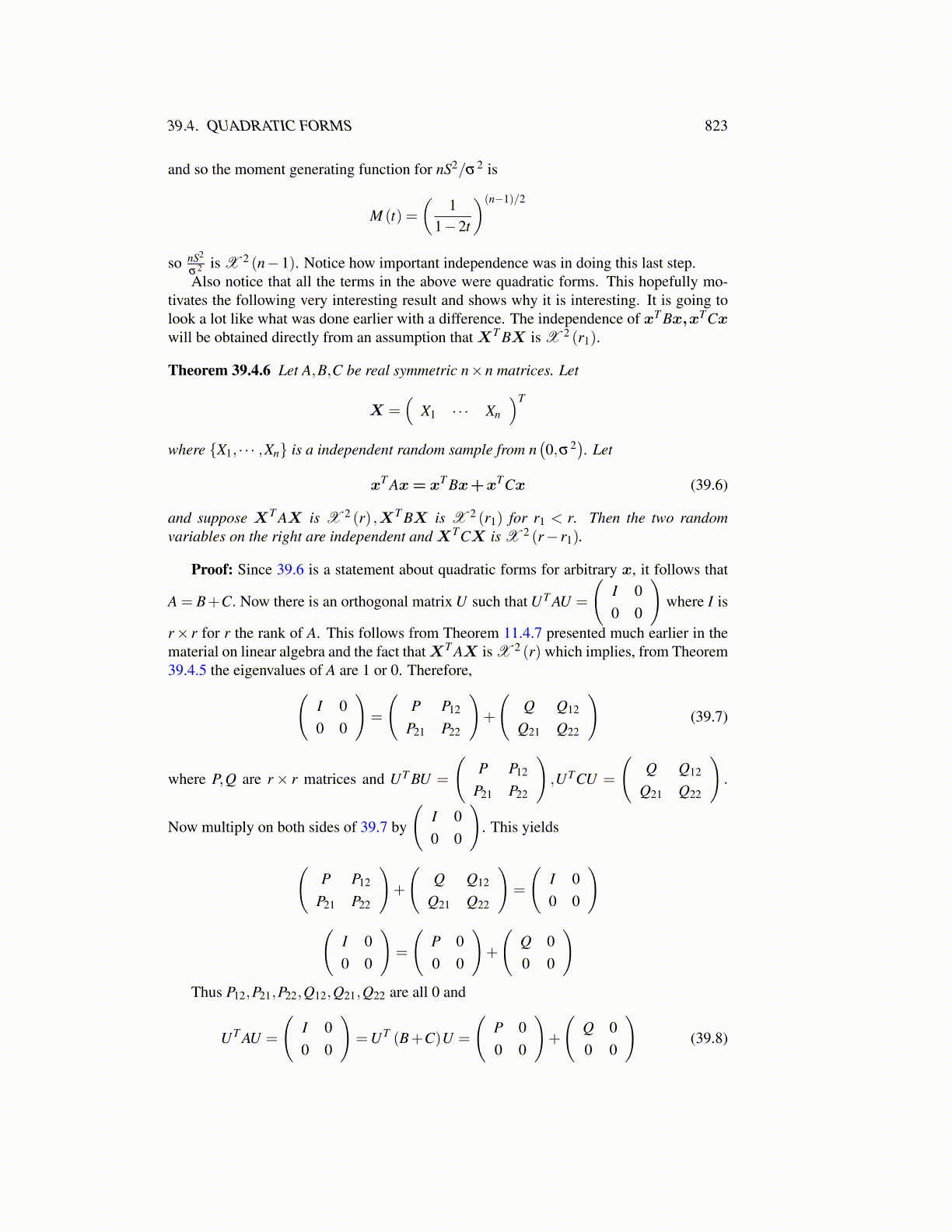
39.4. QUADRATIC FORMS 823
and so the moment generating function for nS2/σ2 is
M (t) =(
11−2t
)(n−1)/2
so nS2
σ2 is X 2 (n−1). Notice how important independence was in doing this last step.Also notice that all the terms in the above were quadratic forms. This hopefully mo-
tivates the following very interesting result and shows why it is interesting. It is going tolook a lot like what was done earlier with a difference. The independence of xT Bx,xTCxwill be obtained directly from an assumption that XT BX is X 2 (r1).
Theorem 39.4.6 Let A,B,C be real symmetric n×n matrices. Let
X =(
X1 · · · Xn
)T
where {X1, · · · ,Xn} is a independent random sample from n(0,σ2
). Let
xT Ax= xT Bx+xTCx (39.6)
and suppose XT AX is X 2 (r) ,XT BX is X 2 (r1) for r1 < r. Then the two randomvariables on the right are independent and XTCX is X 2 (r− r1).
Proof: Since 39.6 is a statement about quadratic forms for arbitrary x, it follows that
A = B+C. Now there is an orthogonal matrix U such that UT AU =
(I 00 0
)where I is
r× r for r the rank of A. This follows from Theorem 11.4.7 presented much earlier in thematerial on linear algebra and the fact that XT AX is X 2 (r) which implies, from Theorem39.4.5 the eigenvalues of A are 1 or 0. Therefore,(
I 00 0
)=
(P P12
P21 P22
)+
(Q Q12
Q21 Q22
)(39.7)
where P,Q are r× r matrices and UT BU =
(P P12
P21 P22
),UTCU =
(Q Q12
Q21 Q22
).
Now multiply on both sides of 39.7 by
(I 00 0
). This yields
(P P12
P21 P22
)+
(Q Q12
Q21 Q22
)=
(I 00 0
)(
I 00 0
)=
(P 00 0
)+
(Q 00 0
)Thus P12,P21,P22,Q12,Q21,Q22 are all 0 and
UT AU =
(I 00 0
)=UT (B+C)U =
(P 00 0
)+
(Q 00 0
)(39.8)